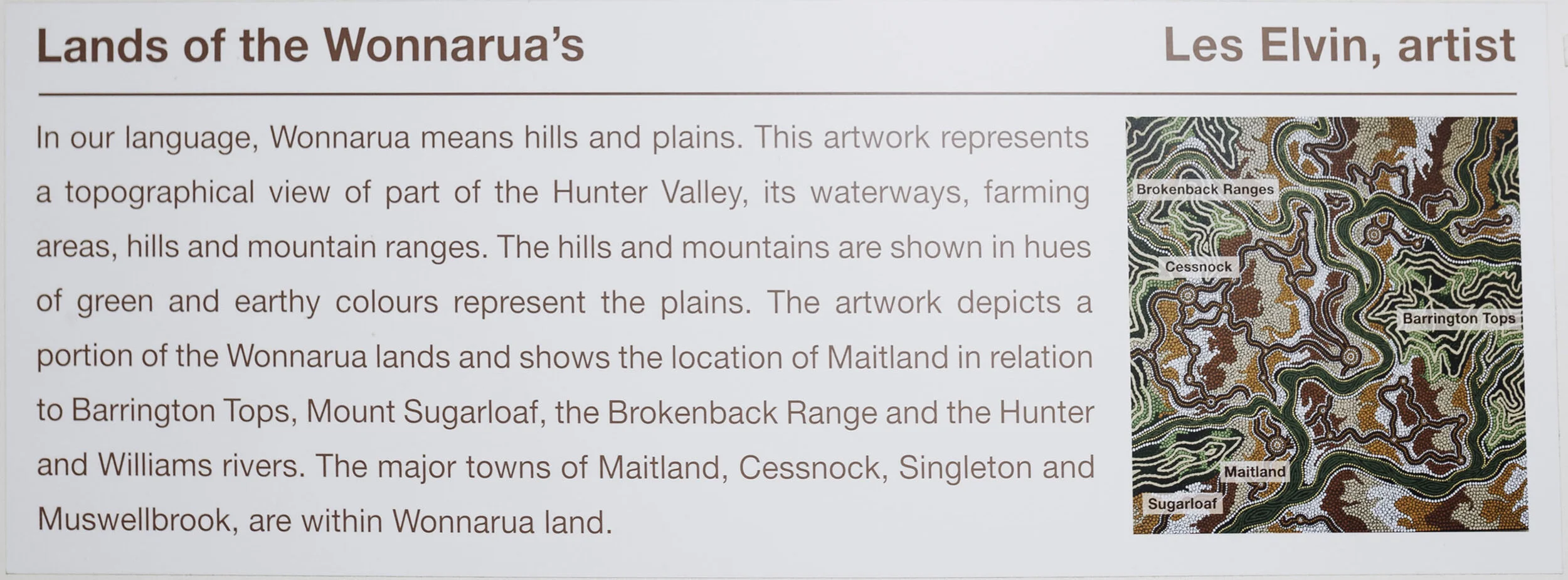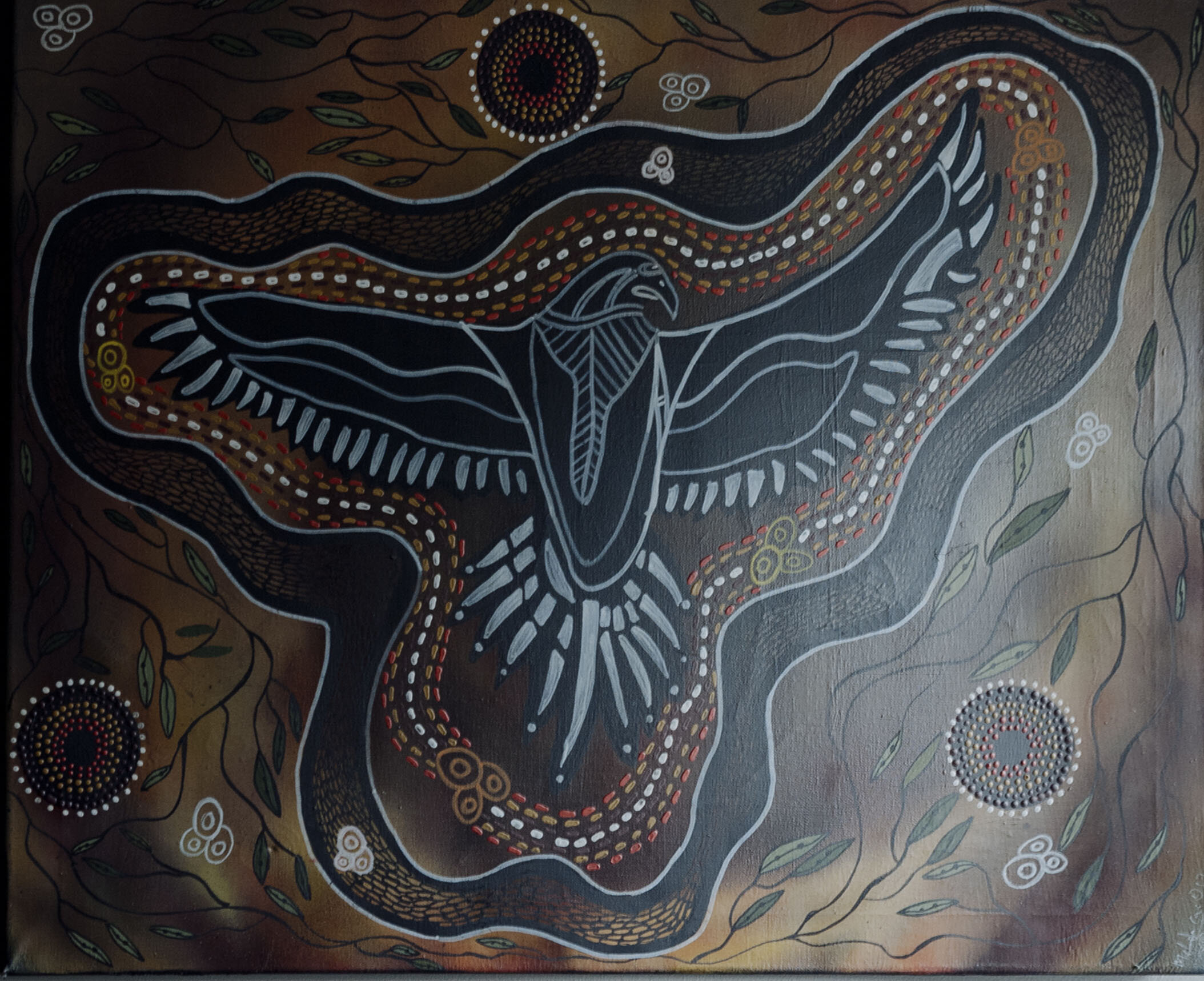A place for health.
The Maitland Hospital is built on Wonnarua country. Sadly, and until fairly recently, the history of the treatment of Aboriginal people in Maitland Hospital, as in the healthcare system elsewhere in the state, is a history of exclusion and of cultural ignorance. As Tara Dever, Chief Executive Officer of the Mindaribba Land Council, observes: ‘Aboriginal people historically were not allowed in that space [the hospital]’.
The situation is changing. There is now acknowledgement of the songlines that cross through and around the site. There are strategies to ensure culturally appropriate health care. There is a small but growing number of Indigenous staff.
There is, as Tara explains,
connection to country through large infrastructure that we all use… and a huge waterway that looked after largely women and children as they moved through and connected to larger hunting grounds. This was a place for health and was a place for looking after families and that’s what our hospital is. It’s connected to all those parts: living, loving, grieving.
Acknowledgement of the health service’s failure to provide for Aboriginal people in the past as well as the significance of connection to country and to health and healing is conveyed through a number of artworks currently in the old Maitland Hospital. The following are examples of those artworks.
Hunter New England Local Health District Sorry Statement, 2016.
(Maitland Hospital Collection 60)
The statement currently hangs in the corridor outside the maternity unit. There are paintings by unnamed artists on either side of the statement.
The Sorry Statement begins:
Hunter New England Local Health District acknowledges and expresses deep regret that policies and actions of our health services have affected the human dignity and spirit of Australia’s Aboriginal and Torres Strait Islander People.
We accept that these policies were inappropriate and inequitable and that their implementation over many years significantly contributed to the current health status of Aboriginal and Torres Strait Islander people.
Les Elvin, Land of the Wonnarua’s.
(Maitland Hospital Collection 366)
The artwork is on the wall of the Emergency waiting room and is accompanied by explanations about the imagery.
Elsie Randall, Safe Birthing Place.
Digital illustration.
(Maitland Hospital Collection 365)
The artwork is on vinyl on the doors to the maternity unit. The didactic panel explaining the imagery is located on the wall opposite the entrance to the Intensive Care Unit.
For more about Elsie Randall, visit her website at https://elsierandall.wordpress.com/ .
Carissa Paglino, Sorry Business, Sad News, April 2018.
Digital illustration.
(Maitland Hospital Collection 376).
The artwork is on the wall outside the entrance to the Intensive Care Unit. It is accompanied by a certificate of authenticity and an explanation of the symbolism and meaning in the artwork.
Melinda Cain, Eagle Spirit, undated.
(Maitland Hospital Collection 378)
The artwork is in the Intensive Care Unit and is accompanied by a framed biography of the artist and an explanation of the wedge tail eagle as the totem for the Wonnarua Nation. Leniece Trotter, Nursing Unit Manager of Intensive Care, explained that the work ‘was painted for us and presented by the artist.’
Other works
There are other works on The Maitland Hospital walls that connect to Aboriginal stories and cultural values. At present, the names of the artists and the artworks and the origins of the works are not recorded.
The following is a sample of these other works.
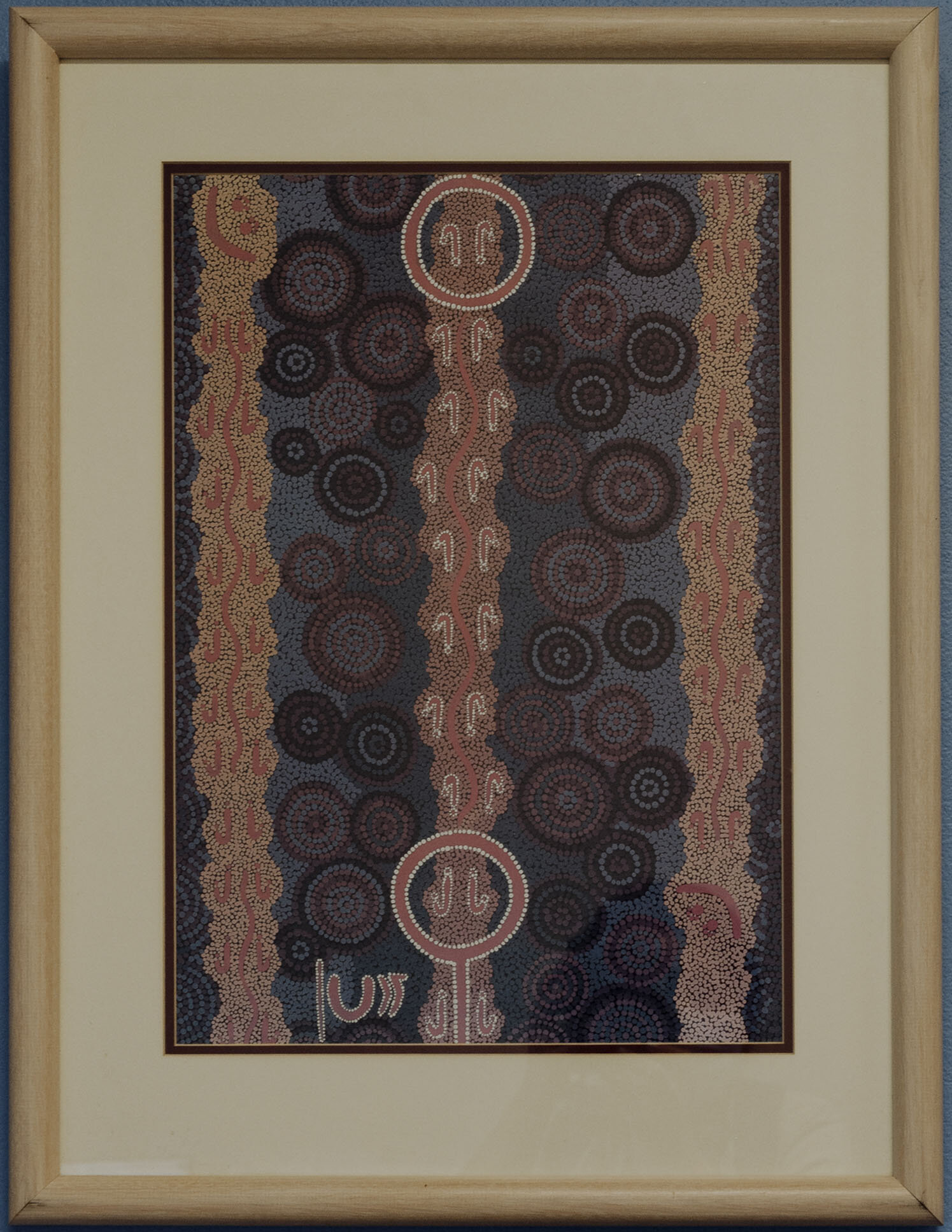
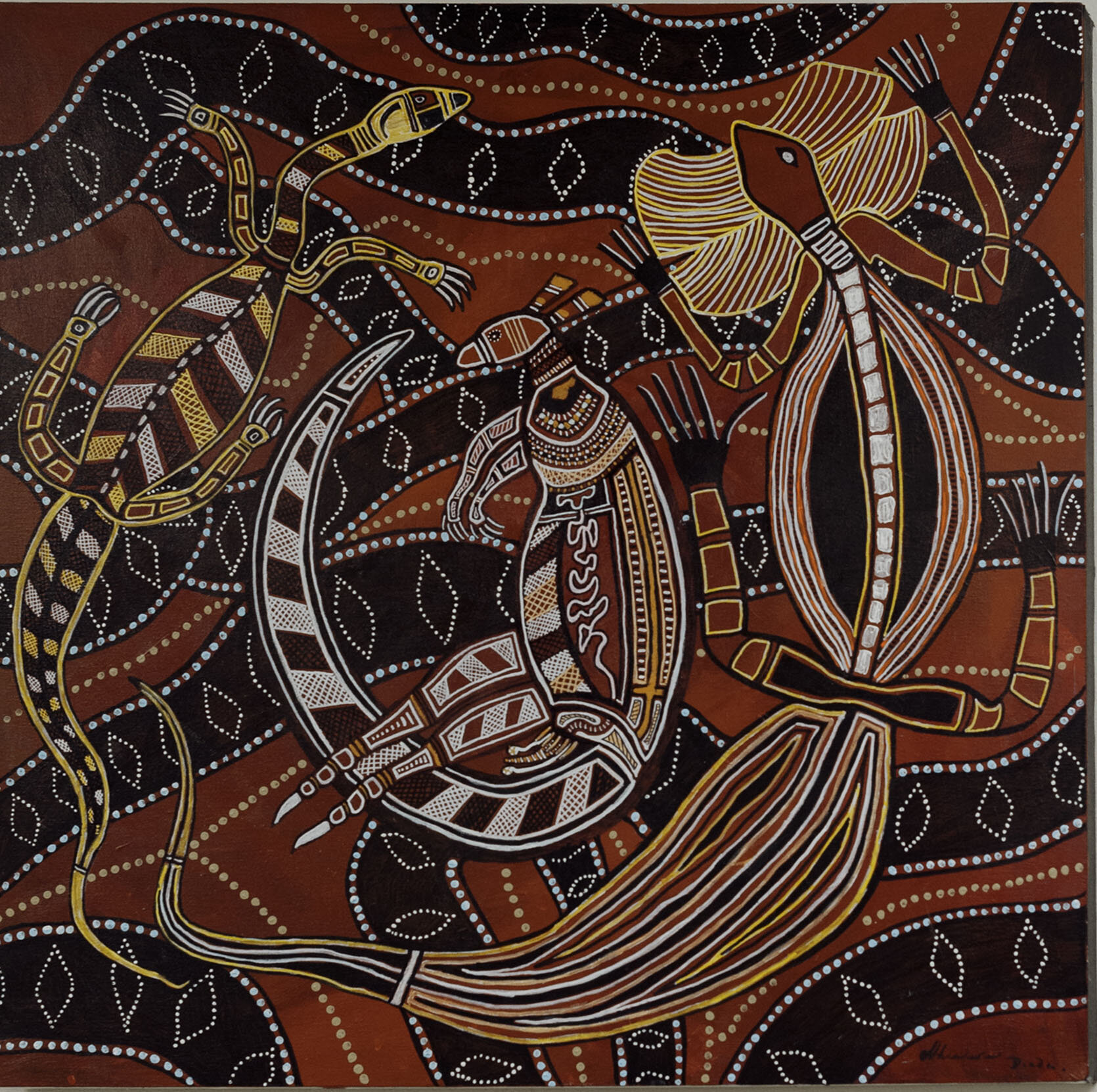
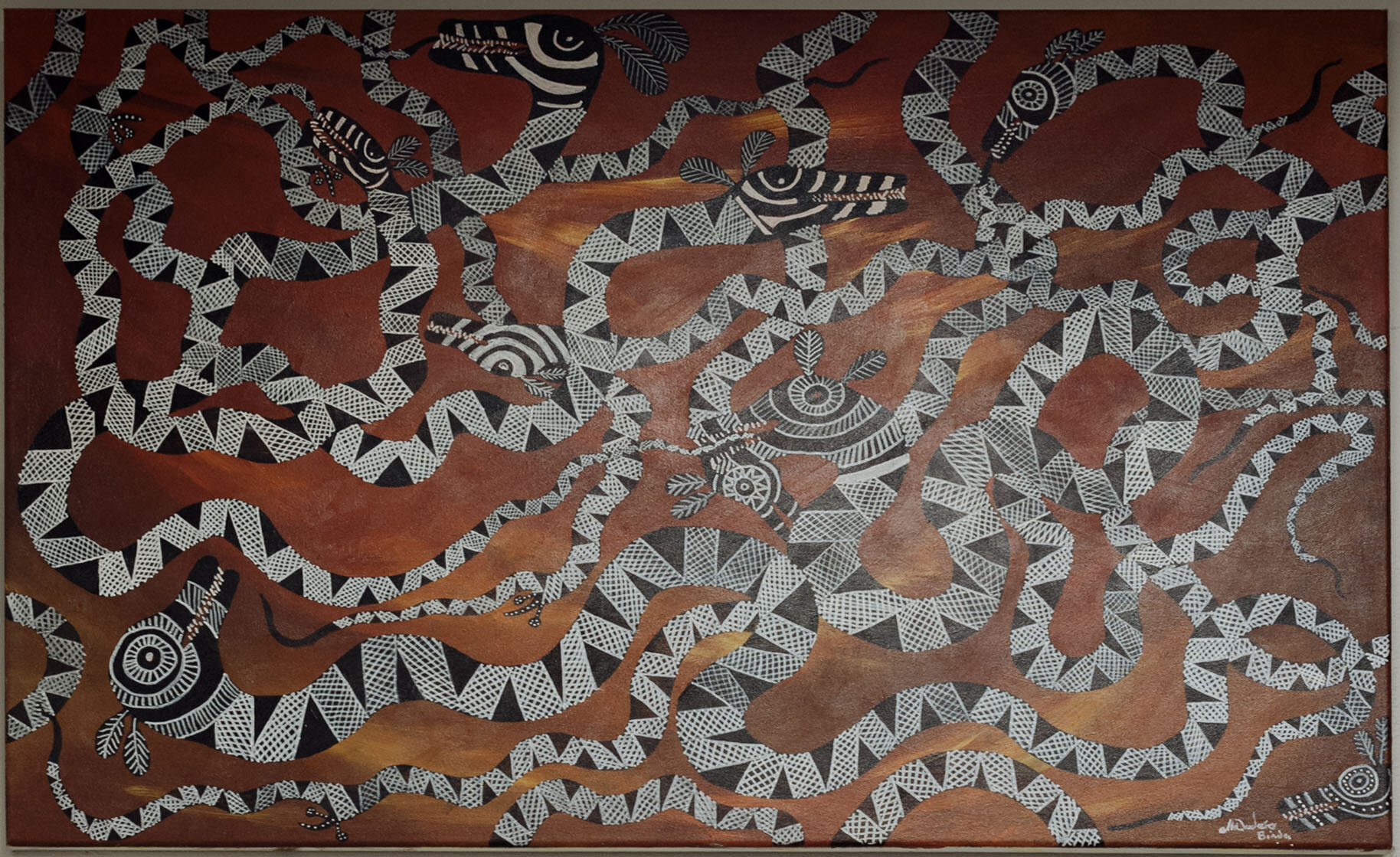

(Maitland Hospital Collection Items 377, 384, 385, 386)



